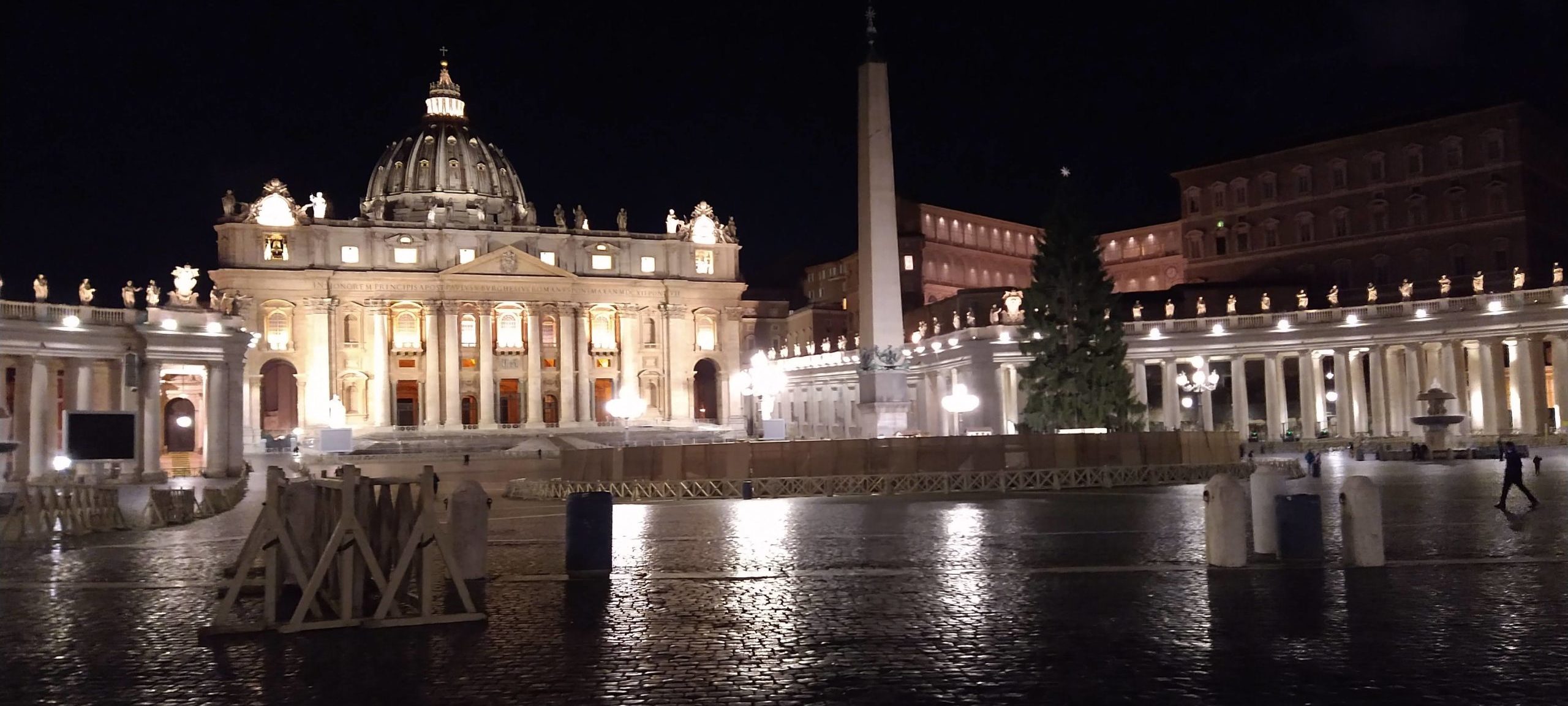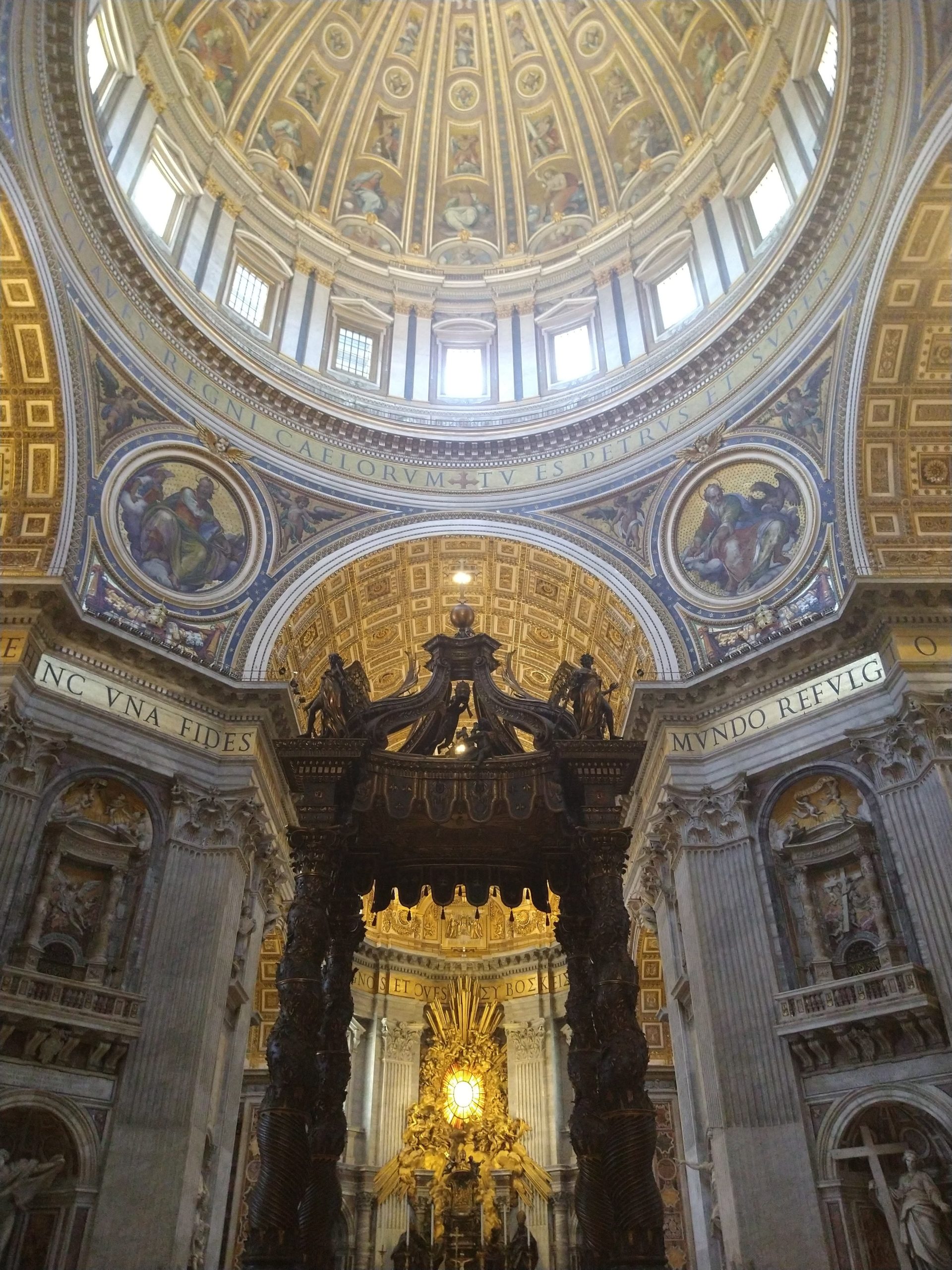
St. Peter’s Square can be a place of peace and contentment for pilgrims from around the world. (Photo by Jacinta Van Hecke)
Everyone has seen a thousand pictures of St. Peter’s Basilica. But there are no pictures of the way that St. Peter’s Square feels at night. The rush of the fountains, the rounded stones to lean against, the wheeling of the birds, the quiet and solemn witness of the obelisk, the glow of our home church and its welcoming arms, the chattering of tourists in every language because “in you all find a home.”
St. Peter’s Square was the first place I went to in Europe. On my first pilgrimage and when I returned with my family, we stayed a few blocks away, allowing us to return there multiple times throughout our visit. There were late nights coming home with gelato, bringing a journal after a long day and just sitting quietly.
A month or so later, I arrived in Rome from a solo trip to Siena. It had been a long and rather stressful day of travel, and I was already exhausted when I found my friends and joined them for dinner, gelato and a stroll through the city. All of that was excellent, but I was pretty worn out. But finally we made it to the square and I found myself confusingly but completely at rest. Like when you finally turn off the car after a long day of driving, or put on sweatpants after a long day of being dressed up and professional. I stood on the familiar cobblestones and took in the beautiful lit facade and colonnade, then I sat under the obelisk, looking up at what overshadowed St. Peter’s martyrdom, and I talked to my friend. I was home.
Inside the church is jaw-dropping gold and glory, and every last inch is wrought with all the finery of the Renaissance. It’s one of the biggest churches in the world. But similar to the square, while I am certainly lost in awe at it, I also feel amazingly comfortable and at rest.
I’d like to think that it’s a combination of things. Certainly, the luxury of being able to return multiple times plays a significant role; St. Peter’s Square has been a place I can come under any circumstances, just to be and to rest. I think other experiences have formed this as well. The first time I went inside, I found the tomb of one of my dearest heroes (St. John Paul II), and it was maybe the most moving experience of that whole pilgrimage. I’ve done the Scavi tour, gone inside the narrow, winding excavations below and felt the presence of the centuries, the millennia of pilgrims who have come just like me to the bones of Peter, bones that walked on water and laughed with the Son of God. I’ve also climbed to the top, seen the wide scope of Rome from the cupola and had a cappuccino standing behind the statues on the roof. I’ve received the Eucharist in all sorts of random corners of the main church and in the crypt below.
But there’s another thing about the design of St. Peter’s: It is designed to feel close.
There are two sets of words, running around the inside of the massive dome. The words further up are much larger than the ones below, and that is so that they will look, from the ground, like the same size. This principle runs through the art and architecture of the whole complex. By design, the grandeur of St. Peter’s is intimate. It is a place where the infinite God who dwells intimately within each heart is reflected.
Going on pilgrimage (just like any other adventure) involves much that is new and strange, and that is important for many reasons. But in St. Peter’s, in particular, the newness is mingled deeply with being at home.


